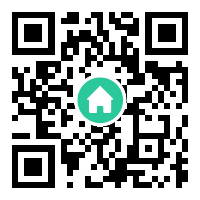In the era of seamless digital communication, Telegram multiple devices support has emerged as a game-changer for users who demand flexibility and accessibility. Unlike many messaging platforms that restrict active sessions to a single device, Telegram allows simultaneous logins across smartphones, tablets, desktops, and even web browsers. This feature not only enhances productivity but also redefines how users interact with their messages, files, and communities. By prioritizing cross-device synchronization, Telegram addresses a critical pain point for modern users who juggle multiple gadgets daily.
Why Multi-Device Support Matters
The ability to use Telegram multiple devices simultaneously eliminates the frustration of switching between gadgets or losing access to chats. For professionals, this means responding to work messages on a laptop while sending personal updates via a smartphone. Students can take notes on a tablet during a lecture while staying connected to group chats on their phone. Telegram’s architecture ensures that messages, media, and settings sync in real-time across all logged-in devices, creating a unified experience. This flexibility is particularly valuable in regions where mobile data costs are high, as users can rely on Wi-Fi-connected devices without sacrificing connectivity.
Technical Innovation Behind the Scenes
Telegram’s multi-device functionality is powered by its proprietary MTProto protocol, designed for speed and security. Unlike platforms that rely on centralized servers to mirror data, Telegram uses a distributed system where each device independently communicates with the cloud. This approach reduces latency and prevents single points of failure. When a user sends a message, it’s encrypted end-to-end (in secret chats) and instantly propagated to all linked devices. The system also employs differential synchronization, updating only modified data to minimize bandwidth usage. For example, editing a sent message updates across devices without resending the entire conversation history.
Security in a Multi-Device Ecosystem
Critics often question whether Telegram multiple devices compromise security. However, Telegram implements robust safeguards. Each device generates unique encryption keys, and secret chats remain exclusive to the initiating device pair. The platform’s “Active Sessions” dashboard lets users monitor and remotely terminate suspicious logins. Additionally, Telegram avoids SMS-based verification, relying instead on app-authenticated logins to prevent SIM-swapping attacks. The introduction of passcode locks for individual devices adds another layer of protection, ensuring that even if one gadget is compromised, others remain secure.

Use Cases Transforming Daily Life
The practical applications of Telegram multiple devices extend far beyond casual messaging. Businesses use linked devices to manage customer support channels across teams, while developers coordinate code snippets between workstations. Families share calendars and photos across tablets and smart displays. During crises, activists have leveraged multi-device access to maintain communication channels when primary devices are confiscated. Even content creators benefit—editors can preview posts on a desktop before publishing from a mobile device. These scenarios highlight how Telegram’s design aligns with evolving digital workflows.
Future of Cross-Platform Messaging
As Telegram continues refining its multi-device capabilities, features like device-specific notification settings and selective synchronization are likely to emerge. The integration of IoT devices could enable messaging via smartwatches or connected home systems. However, challenges remain in balancing feature parity across platforms—some advanced bots or custom themes currently work best on specific devices. By maintaining open-source clients and encouraging third-party development, Telegram aims to create an ecosystem where the number of devices becomes irrelevant to the user experience.
In conclusion, Telegram multiple devices support represents more than technical prowess—it reflects a philosophical commitment to user-centric design. By tearing down barriers between gadgets, Telegram empowers individuals to communicate and collaborate on their own terms. As digital lifestyles grow increasingly device-agnostic, Telegram’s approach sets a benchmark for what modern messaging platforms should aspire to achieve.












